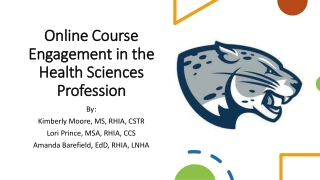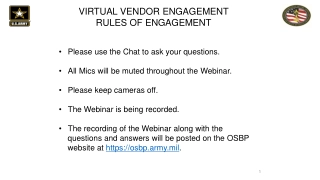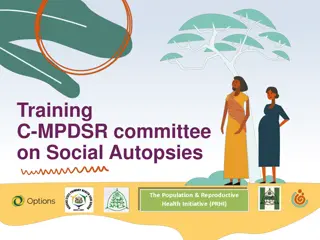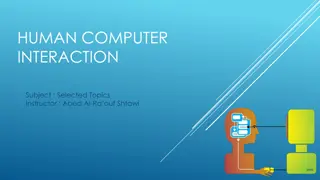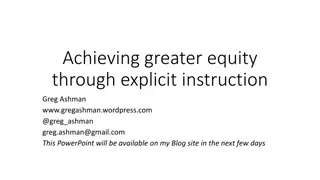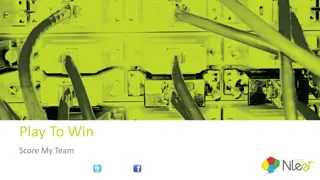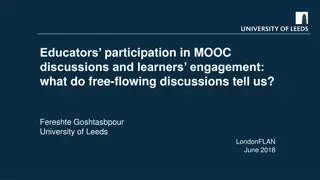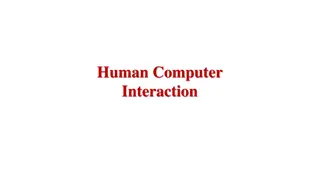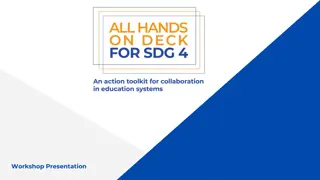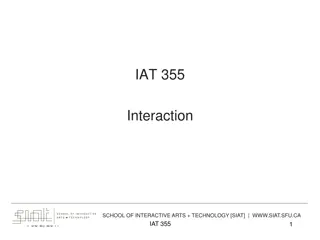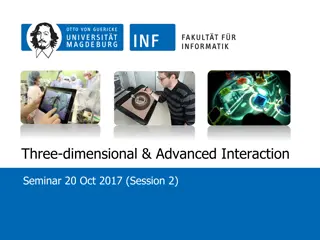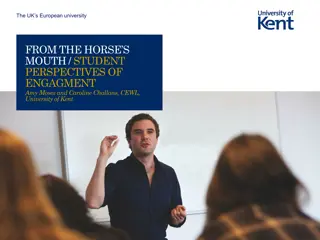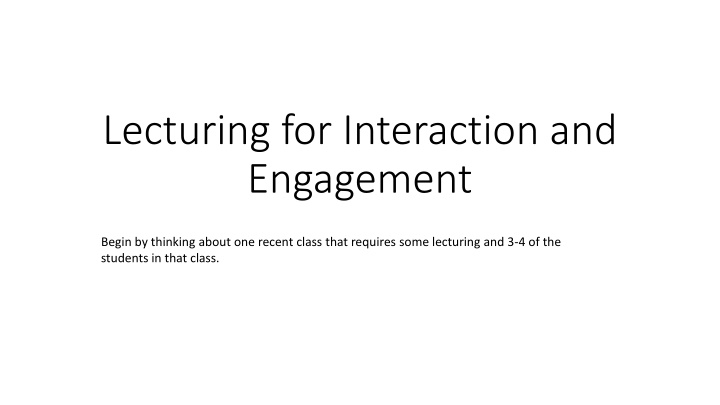
Enhancing Student Engagement through Interactive Lecturing Strategies
Learn how to engage students effectively through interactive lecturing methods. Discover the importance of building a connection with students, priming them for engagement, and utilizing the socio-ecological outcomes model for impactful teaching. Explore techniques to enhance student participation before, during, and after lectures.
Uploaded on | 0 Views
Download Presentation

Please find below an Image/Link to download the presentation.
The content on the website is provided AS IS for your information and personal use only. It may not be sold, licensed, or shared on other websites without obtaining consent from the author. If you encounter any issues during the download, it is possible that the publisher has removed the file from their server.
You are allowed to download the files provided on this website for personal or commercial use, subject to the condition that they are used lawfully. All files are the property of their respective owners.
The content on the website is provided AS IS for your information and personal use only. It may not be sold, licensed, or shared on other websites without obtaining consent from the author.
E N D
Presentation Transcript
Lecturing for Interaction and Engagement Begin by thinking about one recent class that requires some lecturing and 3-4 of the students in that class.
Objectives: Recognize importance of the socio-ecological model means of engaging student prior to lectures Recognize the importance of teaching, social, and cognitive presence in preparing lectures and engaging students. Recognize and develop techniques to engage students before, during, and after lectures.
Socio Ecological Outcomes Model Background/defining factors Societal factors Inputs Student Success Socio- ecological Non Cognitive Domain Academic Domain Environmental Domain Campus Ethos Domain Structural Domain Domain Luke Wood and Frank Harris
Step 0: Before class begins: Be relational show an authentic interest in students' and students success Humanize yourself Learn one thing about each student that has nothing to do with being a student.
How do you do this? How do I do this? Get to know you survey incorporate information into pre-course or course discussions Relational Emails How can you do this? People don t care how much you know until they know how much you care Theodore Roosevelt
Socio Ecological Outcomes Model Background/defining factors Societal factors Inputs Student Success Socio- ecological Non Cognitive Domain Academic Domain Environmental Domain Campus Ethos Domain Structural Domain Domain Luke Wood and Frank Harris
Step 1: Before the lecture Prime students for engagement What should they be thinking about What are we doing today? How does the reading connect with what we are doing today? You never get a second chance to make a first impression
How do you do this? How do I do this? 1 minute papers/talk (KWL) Skeletal notes Poll questions Attendance word Introduce the lecture How can you do this?
The lecture tends to have a bad rap just because something is mishandled by some teachers doesn t mean the method as a whole is inherently flawed (Brookfield, 2015, p. 69). It is ineffective to use lectures to repeat material from previously assigned reading, as students may be less inclined to do the reading if they anticipate repetition (Nilson, 2010). lectures can be helpful for showing students the big picture, explaining complex examples, modeling the kind of thinking you want students to engage in, and presenting ideas in a way that will give students different insight into the subject matter (Brookfield, 2015, pp. 71-72).
Step 2: The Lecture Outline ideas Monitor pacing, tone, emphasis. Pose a question Move around Simple Complex Pay attention to sound quality 10-15 minutes short manageable chunks and background noise Model ideas for your students Caption Engagement activities in between chunks
How do you do this? How do I do this? games Collaborative worksheets Think pair share square Voice thread comments end of or embedded into lecture How can you do this
Step 3: After the Lecture Summarize main points of learning Question to assess learning and clarify misunderstandings Bridge to next lesson Bridge back to the world You never get a second chance to make a lasting impression
How do you do this? How do I do this? Muddiest point questions w/ summary video Lecture comments Look ahead Be relational How can you do this?
Questions? Thoughts?

